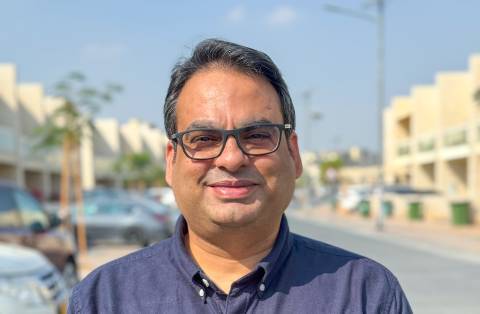Securing the summer – a capital solution for public security
Tim Compston, of SecurityNewsDesk, finds out more about the efforts of the private security sector and the police to keep public events across the nation’s capital running smoothly over the summer months.
However you look at it, managing event security remains a challenge at the best of times given the number of attendees and the sheer logistics involved. Here we get an insider’s view on what is being done this summer to keep some of London’s most well-known events safe and secure, whether they are concentrated in one venue such as Wimbledon – the world’s oldest and most prestigious tennis tournament; range over a much wider public area like Hyde Park, or represent a moveable feast, with the Notting Hill Carnival being a good example of an energetic street-based festival.

Catching up with Eric Alexander, managing director, events, at G4S, he confirms that G4S has already kicked-off the summer with several large-scale efforts, ranging from hundreds of personnel at Wimbledon to the Barclaycard British Summer Time concerts that featured headline acts such as Taylor Swift and The Who.
Serving solutions
In Alexander’s words Wimbledon really stands out from the crowd as ‘one of the most significant events that G4S does in the summer’ and has handled for some 26 years now: “I struggle to think of a sporting event which is as big as Wimbledon, even just for longevity,” says Alexander. To give some idea of the footprint of Wimbledon he reports that there are somewhere in the region of 38,000 spectators per day inside the perimeter, which equates to around 490,000 tennis fans across the whole event. Not surprisingly, a whole spectrum of expertise is required for Wimbledon including: crowd management, security, putting the brakes on counterfeit tickets, player escort and even protecting the trophies themselves.
Thankfully, the fact that Wimbledon is held in the same place every year – compared to something like the Open Golf Championship which G4S also handles – means that Alexander’s team is able to draw on its considerable expertise from previous years and apply lessons learned along the way. According to Alexander planning was already in the works for 2016 pretty much once the last ball was served this time around: “We have already had the ‘hot’ debrief and will have the ‘cold’ debrief in the coming week [mid-August]. What went well? Is there anything that we can tighten up for next time?” For Alexander ‘continuous improvement’ is a key mantra here: “You can’t just sit back and say it went well last year and do the same thing again and again.”

Alexander goes on to explain why the crowd dynamic at Wimbledon is such a different proposition to some of the other events in G4S’s customer portfolio, for example music festivals: “The good news is that by and large Wimbledon spectators are coming to sit down to watch tennis and they are real enthusiasts.” The key therefore for G4S at Wimbledon, reveals Alexander, is to move the spectators into the grounds of the All England Club in the most efficient manner possible: “We want to make sure from the minute they arrive that they feel welcome and, importantly, we are not seen as an obstruction without, at the same time, reducing security delivery.”
For Alexander even for a relatively ‘compliant audience’ it is still vital to maintain 100 percent bag searches: “Those queuing for tickets overnight all go through airport style security with metal detectors and X-ray machines to the same level of training and standard.” He says that, thankfully, these days very few people attending Wimbledon tend to object to having their bags searched: “This is really just another part of life now.”
So what happens when spectators are actually inside Wimbledon? Alexander says the focus for his personnel is then on helping people navigate their way around as well as managing the fact that there are certain areas where, without proper accreditation, they should not go into. G4S personnel are also tasked with providing an escort for some of the biggest stars in the game: “We move the players from the dressing room areas to and from court. These tennis players are freely walking through the general crowd – they are not completely shut down.” Beyond this G4S personnel are tasked with protecting the tennis courts when games are on to avoid unnecessary disruption: “We want to stop them [spectators] trying to get on to the courts. It could be down to people wanting ‘selfies’ with the players and things like that,” says Alexander.
Throughout The Championship, for a ‘bigger picture’ view, the G4S team is able to co-ordinate its capabilities through a central command room – controlled by the All England Club – which allows the monitoring of queues, gate problems and popular crowd spots – like Henman Hill – while, at the same time, linking them into the emergency services.
In tune for Hyde Park
Focusing on another standout London-based event, according to Alexander, G4S personnel were centre-stage at the Barclaycard British Summer Time festival in Hyde Park which ran the fortnight before the Wimbledon Championships. “It was held over 14 days, and unlike Wimbledon, in what was essentially a public area with a rather eclectic mix of acts and, varying demographics, for those who came to spectate. You had 64,000 young people at Taylor Swift who were completely different to the people who ‘rocked up’ to see the Who the previous night,” reports Alexander
Interestingly, in a sign of the way event security management has been transformed, Alexander spotlights the fact that inside the perimeter at the festival it was pretty much police free: “There were a lot of police outside the barrier but not inside. This reflected the level of expertise, and comfort, that we all collectively brought together for the safety advisory group to sign this off,” he concludes.
Bespoke Training
Regarding where technology can improve the handling of events, Alexander talks about efforts by G4S through an online portal to make training even more bespoke: “We have developed in-house what we call a ‘virtual events page’. Essentially, regardless of whether it is a music event, a sporting event, or a conference, we work with the organisers and stakeholders to develop on-line a specific package for that event.” Alexander says that ‘the portal’ is invaluable in allowing staff to know what to expect before they arrive on site, the culture, even down to the uniform codes and what their specific function will be: “They are getting the complete 360 degree view.”
Caught on Camera
Asked about the attention now being given to body-worn cameras, as the ‘hot topic’ of the moment in the world of event management, Alexander says that this is nothing new for G4S: “To be honest we have been using them at events for three or four years now.” He confirms that they are typically rolled out on special G4S response teams working in high impact areas: “Depending on what the event or gig is we have teams dotted around to respond to any incident and they tend to have them [body-worn cameras]. If something gets heated the camera is there and it is certainly good at calming a situation down.”
For his part, Daniel del Soldato, marketing manager at Wireless CCTV (WCCTV) reckons that, in the context of events, rapidly deployable, portable, CCTV and surveillance systems make a great deal of sense. Casting his mind back to the London Olympics, del Soldato says that the company’s WCCTV Towers were employed by LOCOG (the organising committee) along areas of perceived risk and mini-domes were utilised by Bexley and Brent for the Olympic Torch relay routes. Three years on, del Soldato confirms that there is renewed attention being paid to the WCCTV Towers, which can be powered autonomously, and other elements like remote access body-worn solutions for events: “We are seeing, at least from in-bound enquiries, more interest from people doing football matches and festivals.”
Carnival policing
Returning to other London-based occasions, the popular Notting Hill Carnival which attracts more than a million visitors every year necessitates an unprecedented police effort. In comments posted on the Metropolitan Police’s website commander Dave Musker reiterated what is involved in maintaining public order at the largest street party in Europe: “The scale of the policing operation is enormous. We have officers working around the clock to keep people safe and over the period of the weekend this involves around 14,500 officer shifts.”
Police activity in recent years has covered everything from the deployment of the so-called ‘super recognisers’ – basically officers who have the ability to remember hundreds of offenders faces – to linking in CCTV cameras along the route. The police even make use of ANPR (Automatic Numberplate Recognition) and other tactics outside of the Carnival area to prevent trouble makers making it that far. In 2014 the Met made 252 arrests, down from 301 in 2013. Of these 76 were related to drugs, 43 for public disorder, and 23 for possession of offensive weapons.
Security searches
Moving on to one aspect of event security which can prove especially problematic if not handled properly, Dirk Wilson, chairman of the Police and Public Services Section of the BSIA (British Security Industry Association) and managing director at Sector Security Services Ltd, feels that a recently published Code of Practice for Security Searches represents a real step forward. Developed by the BSIA section he chairs, this sets out landmark guidance on the searching of individuals, areas, buildings, vehicles, and with dogs. Wilson acknowledges the importance of having a common reference point, like the Code of Practice – which can be downloaded from the BSIA website – for personnel who are tasked with carrying out searches and believes that this has the potential to unlock greater police and public confidence in the private security sector and, crucially, its ability to provide support at major events: “The Code of Practice is a double-edged tool, it protects the searcher who can say if they are following that procedure and protects the searched because they can check that something is or isn’t being done,” says Wilson.
Forward planning
To summarise then, it is clear when dealing with the security of events like those in London this summer – involving tens of thousands of spectators – that early planning involving the key stakeholders, as well as tailored staff training, and the addition of the latest behind-the-scenes and frontline technology all adds-up to a successful outcome.
[su_button url=”https://www.securitynewsdesk.com/newspaper/” target=”blank” style=”flat” background=”#df2027″ color=”#ffffff” size=”10″ radius=”0″ icon=”icon: arrow-circle-right”]For more like this, click here for the SND Newspaper[/su_button]













